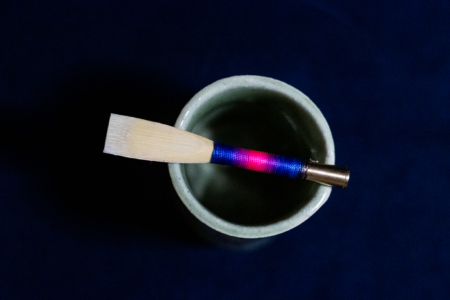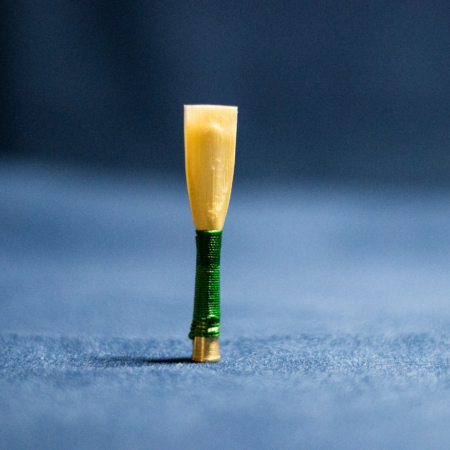Description
|
Staple Shape Width at tip Scrape Total length of exposed cane Pitch |
Baritone oboe Chiarugi 35 mm
Hand shaped ca 10+ mm long, no windows, no wire ca 25-27 mm 415Hz |
Jeanine Krause of JK Studio & Reed Making fashioned this oboe reed style oboe da caccia reed for agility and intense musical expression especially for the cantatas and passions of Johann Sebastian Bach. Hand-shaped and finished, this reed has a very stable yet flexible feel because it is fully played-in and thoroughly tuned with pure intervals using a reference of A = 415Hz. This reed will provide rich depth and stability for the tenor line of oboe bands, taille parts in Bach Cantatas or “Aus Liebe” from the St. Matthew Passion. It also allows lithe passage work in arias such as “Zerfliesse” from the St. John Passion or “Sehet, Jesus hat die Hand” from St. Matthew. Jeanine takes special care with half-hole and forked-fingered notes to enable balanced sound quality. After a reawakening period (please allow up to three normal soakings) and careful adjustment of the desired tension and opening (press closed or pinch open the soaked reed between the thumb and index finger), the reed should require at most only slight adjustment. Please note, this reed is intended for use together with a bocal which is not included in this order. Contact your oboe maker if you are missing this piece. You can adjust the appropriate intonation to fit your oboe da caccia bocal by adding or removing waxed cotton thread to either end of the bocal.
Changes in altitude and humidity will influence the reed so you may need to make some minor adjustments to get your desired “feel” for playing. In addition, oboe da caccia instruments vary widely, even those made by the same maker. I recommend using your fingers (and not your embouchure) to train the reed to have the proper opening and internal volume. Once you have done this, if the reed is too easy blowing. Clip the tip very slightly to build in the desired resistance. If the reed is too hard, dust the tip area on both blades. If it is still too hard, dust the back of the reed on both blades as well. For some instruments, you may find the intonation benefits from narrowing the reed. Contact Jeanine if you would like assistance.








